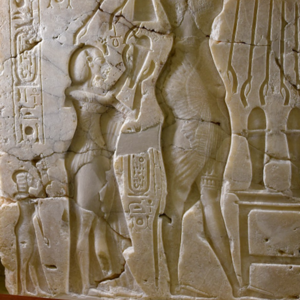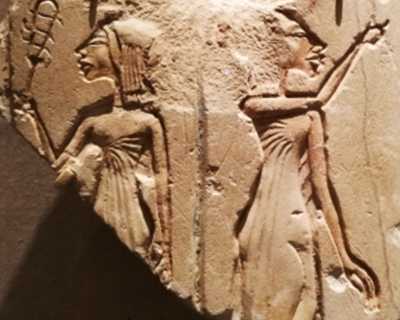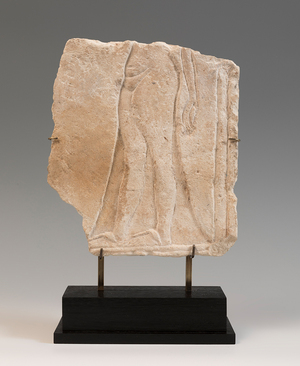The princess of Amarna
Egypt is undoubtedly an inexhaustible source of mysteries yet to be solved. One of the most enigmatic and extraordinary periods of Egyptian history is undoubtedly the Amarna period, the complexities of which continue to be the subject of passionate debate and study. During this period and under the reign of Amenophis IV (better known as Akhenaten) a profound religious transformation took place that would change the paradigm that had dominated until then: Akhenaten abolished the religious rites of Egypt, and instituted the first monotheistic state religion known in the world. Consecrated to the cult of Aton, the pharaoh moved the capital from Thebes to Akhenaton, a city that he himself founded and which would later be known as Amarna. This new enclave was the scene of one of the most fascinating moments of the past, giving birth to an art that, under the naturalist trend, acquired a degree of realism never before achieved.
The pharaoh, in the ancient regime, was the living manifestation of the god Horus, hence he was considered a living god and the ruler of the whole Egyptian society. Akhenaten would assume this idea being the interlocutor between the people and the god Aten. However, one of the most exceptional features of this reign was the role acquired by the women surrounding the pharaoh. These ladies were his wife, Nerferti and the six daughters of the marriage, the princesses Meritaton, Meketamon, Anjesenamon, Neferneferuaton Tasherit, Neferneferura, and Setepenra. The royal family is represented in the reliefs of the temples, tombs and palaces in everyday attitudes, on the one hand, reflecting affection and worship towards the god Aten. This type of representation was unique in Egyptian art.
The great royal wife Nefertiti, appears with the same dimensions as her husband, something atypical because it shows the equivalence of rank and importance. Princesses are also represented with a level of importance rarely seen. Although in ancient Egypt women enjoyed the same rights and freedoms as men, in practice they were relegated to roles of lesser importance and power. During the Amarnian period the women of the royal family had to play a very important role, this is demonstrated by the art. The number of representations of them and the accompanying titles attest to this. The daughters of the marriage who achieved the greatest power were the firstborn and the third. Meritatón, the first, excelled in the reign of Akhenaten to the point that even as a teenager she married her own father and acquired the title of royal wife. It has also been speculated whether she was the natural successor subsequently acquiring the male name of the pharaoh Semenejkara. A mystery still unresolved. Anjesenamon was also queen, first when she married her half-brother Tutankhamun and then her successor Pharaoh Ay. Some of the representations found in the grave goods of the tomb of the child king show his wife with the same canons as in the relief presented by Setdart. Recall that this year marks the centenary of Carter’s discovery of the tomb.
The period of artistic splendor that Amarna experienced would be forgotten for thousands of years. At Akhenaten’s death his legacy was condemned to a damatio memoriae, that is, his memory was attacked by destroying his works and especially the representations of him and his family. Attempts were made to completely erase the image of the monarch to the point of ending the dynasty and disappearing from the records as if he had never existed. The representations of the royal family, as in the case of the following relief, are a unique historical document in the world.
The feet of the royal princess, still anonymous, are protected by sandals probably covered with gold (like those that appeared in the tomb of Tutankhamun) and wrapped by a vaporous dress that reveals the naked body. We do not know which of the princesses it is or to which scene it belongs, however, we can find similar examples in other famous reliefs such as the one preserved in the Brooklyn Museum or the Petrie Museum in London.


This relief has an extraordinary value, firstly, for the quality and fineness of execution, typical of the time when Egyptian art reached its highest levels of sophistication; also for its rarity, true survivor of a persecution and the passage of time; and finally, authentic witness of those women who almost managed to change the course of Egypt and that are a milestone rarely seen in their civilization. The role of women in Ancient Egypt deserves to be highlighted and this is precisely what the exhibition Daughters of the Nile has done. The exhibition will be on display at the Alhajas Palace in Madrid for the next few months. The female voices of princesses, peasant women and priestesses still have much to tell.






